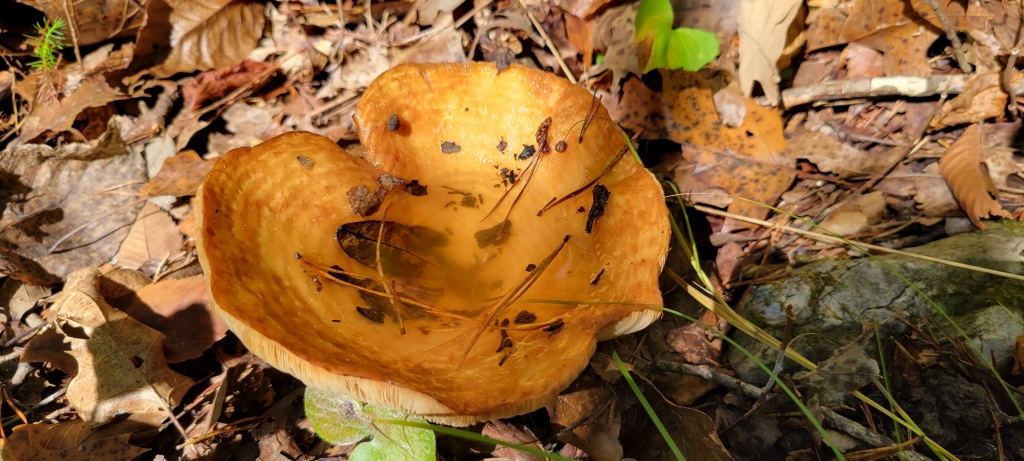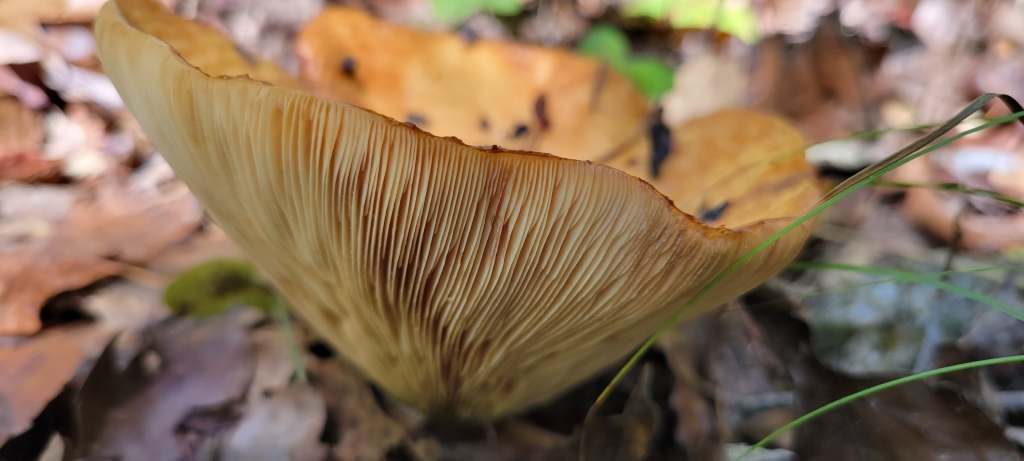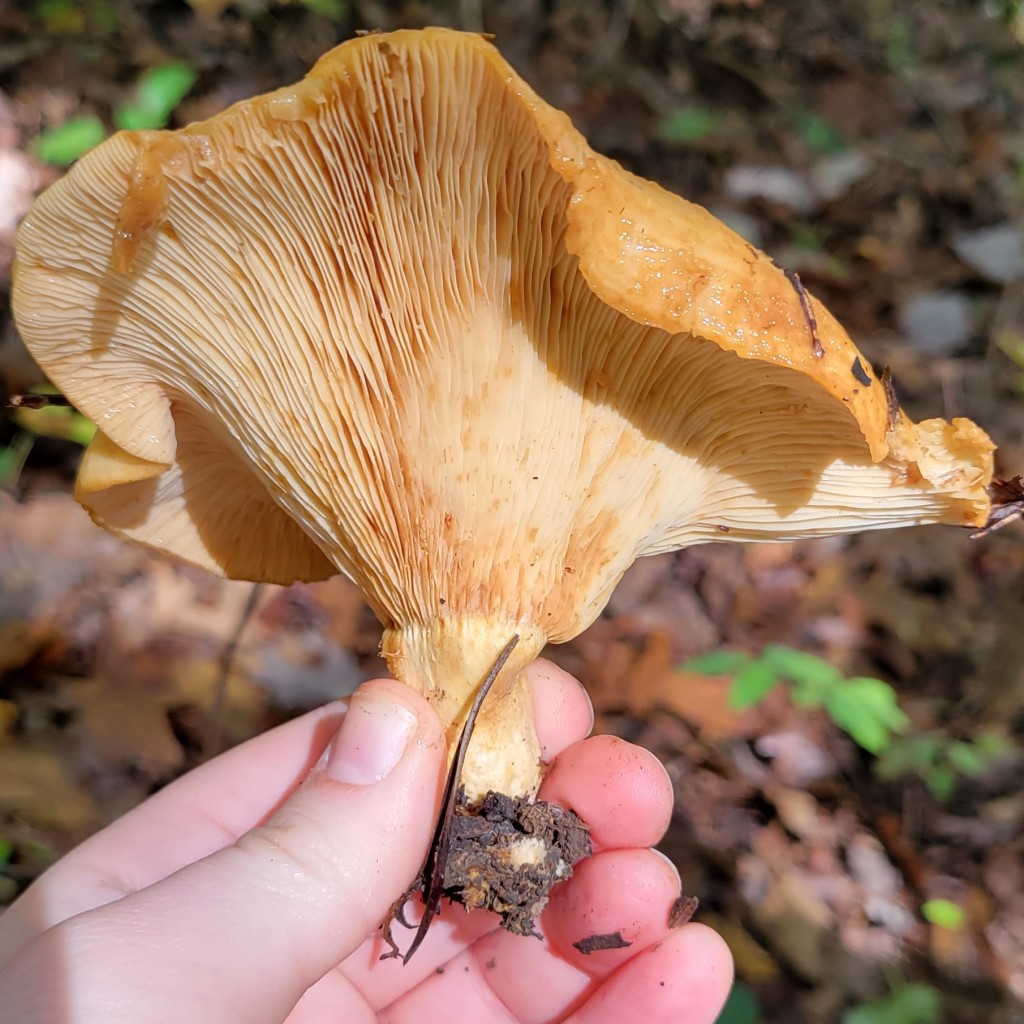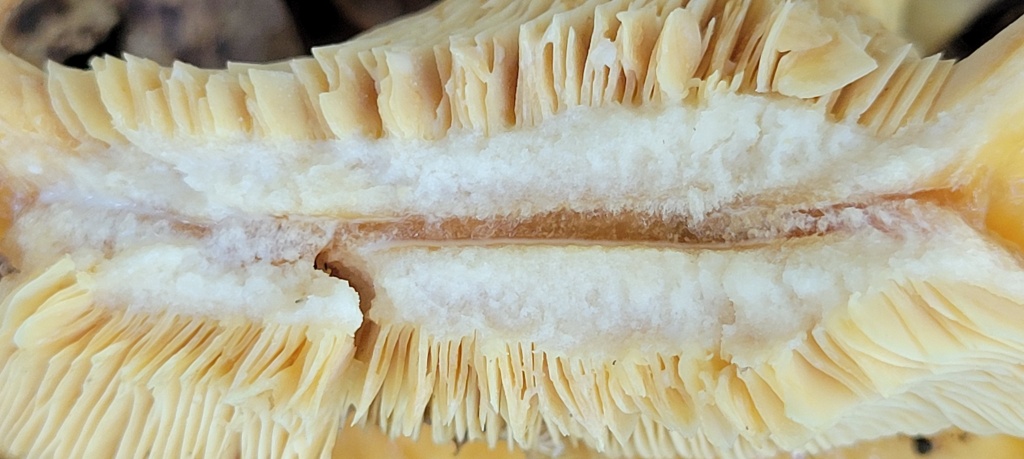I had no idea I’d find another Lactarius species so soon, but this weekend on our hike (in a different park) there were several dotting the sides of the path! All of them looked about the same, with a strikingly yellow, heavily zonated cap and pale yellow gills.

Unlike the Lactarius indigo cluster, none of these yellow Lactarius Lads had a rolled-under cap. They all had the funnel shape that indicates maturity in this genus.


Since there were so many and they were all mature – and because I promised the next time I saw a Lactarius I’d snap it – I felt well justified picking and experimenting with one.

This is our lovely volunteer. Note the gills going down the funnel edge and sort of merging with the stipe. These are therefore decurrent or subdecurrent gills (the difference has to do with how far down the stipe they go). I didn’t draw much attention to the gill attachment of the Lactarius indigo because that wasn’t important for identifying them, but looking at the pictures we can see that those gills are also running a little ways down the stipe.

I took a nice little beauty shot of my yellow Lactarius doing producing its latex (white latex – important for identification)…

And then it was time to try the ol’ Lactarius snap! As a reminder, Lactarius mushrooms have thicker hyphae than many other mushrooms and also have specialized, sphere-shaped cells called sphaerocysts that make up a major part of their flesh. This makes them brittle.
I first tried snapping the cap. Note that I pulled along the same line where I cut the gills to photograph the latex, but the cap just snaps right down with very little resistance. You can see the sides of the section that snaps down coming away as cleanly as if they had also been cut. Note that the gills on the snapped-off piece aren’t disturbed or squished – that shows you how little pressure I had to apply to get the cap to break.

It didn’t make a noise, but it was so satisfying that I snapped another little piece down as well. Check out the clean break on the flesh. It doesn’t look at all fibrous, like a ripped button mushroom might.

Just for fun, I also snapped the stem in half. And it made an audible snap! Very unfortunately, WordPress doesn’t support video on blog posts, so I can’t share the satisfying sound with you. But it sounded very much like snapping a thin piece of chalk.

Look at that! I barely had to apply any pressure.
Anyway, like the goody two shoes I am, I left the mushroom in the park to be lunch for wildlife and only later discovered that to distinguish between the apparently numerous orange/yellow Lactarius species you need to observe a specimen for an hour to see if the latex or cut flesh turn “lilac”. So I can’t be sure about this identification, but my educated guess is that our lads this day were Lactarius croceus (crow-see-us or crow-shus). That’s based on the bright yellow/orange coloration, the fact that they were growing in a hardwood forest in Appalachia, and “scant” white latex. That last one basically means we had to wait a bit for the latex to build up around wounds, rather than drops gushing out of the cut or break.
Michael Kuo has a great description of L. croceus that I referenced to come to this conclusion – he also has a wonderful Lactarius key to identify several species, but unfortunately this isn’t one of the ones he’s gotten to yet.
So now the internet has a video demonstrating the Lactarius Snap! Hopefully at some point I can take a video breaking another type of mushroom for comparison to emphasize how utterly easy it was to snap pieces off that specimen.
